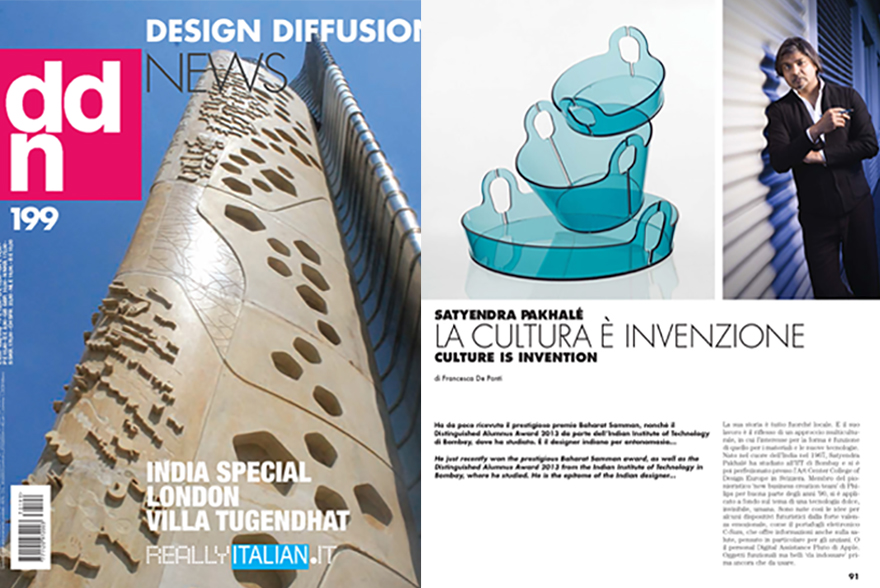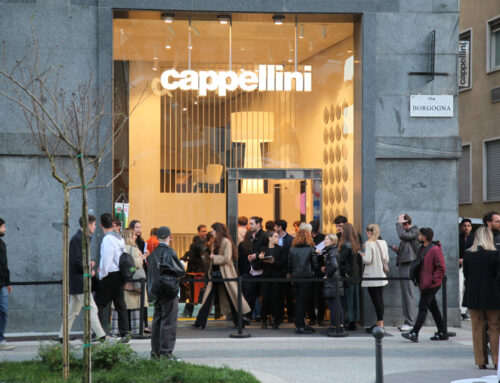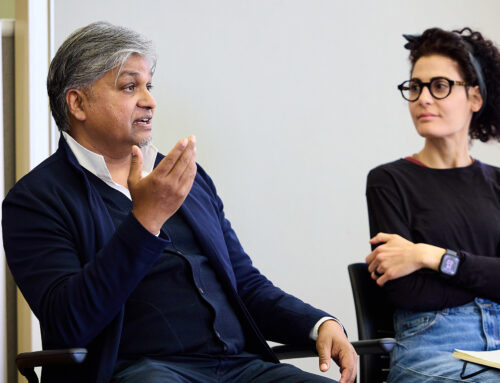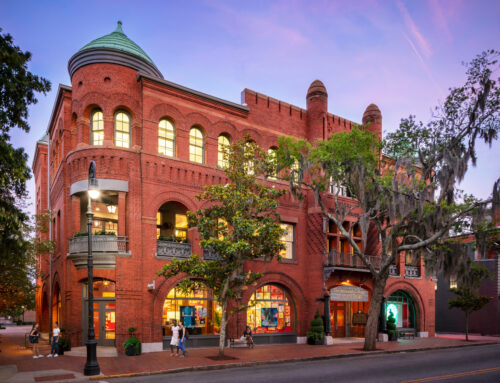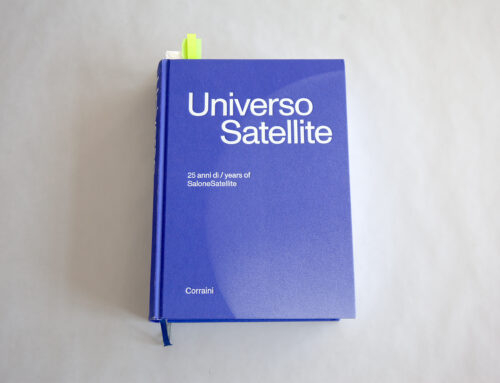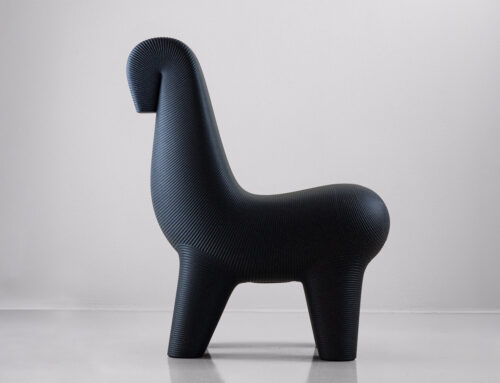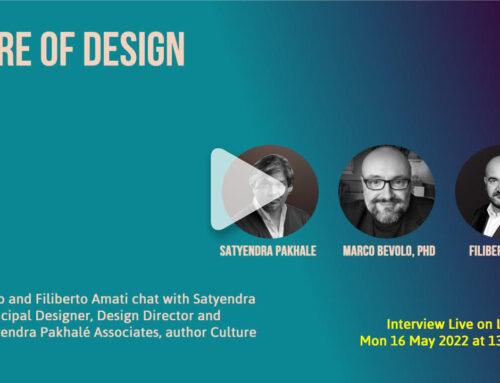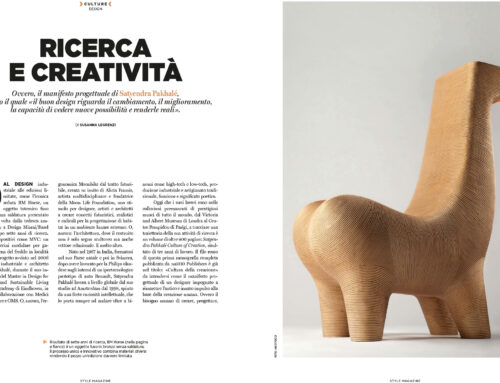ENGLISH VERSION:
He just recently won the prestigious Baharat Samman award, as well as the Distinguished Alumnus Award 2013 from the Indian Institute of Technology in Bombay, where he studied. He is the epitome of the Indian designer…
His story is anything but local. And his work reflects a multicultural approach, in which the interest in form is a function of his interest in materials and new technology. Born in the heart of India in 1967, Satyendra Pakhalé studied at the IIT in Bombay and specialized at the Art Center College of Design Europe in Switzerland. A member of the pioneering ‘new business creation team’ at Philips throughout most of the Nineties, he focused his exploration on the theme of soft, invisible, human technology. This is where he generated the ideas for futuristic devices with powerful emotional impact, such as the C-Sam digital wallet, which also provides medical information, conceived in particular for the elderly. Or the personal Digital Assistance Pluto by Apple. Functional objects that are good- looking ‘to wear’ other than to use. Since 1998 he has lived in Amsterdam, where he designs products and installations for some of the most important companies in the world, including Magis, Moroso, Alcantara, and from where he is constantly
called upon to intervene on themes that push new frontiers. (This is case of the recent conference on the evolution of transportation design in India, China, Africa and Brazil organized as part of Railway & Mass Transit Interiors by Köln Messe). His work is characterized by an open-mind approach, which naturally leads him to experiment. “Creation is generated by curiosity”, he said some time ago in a video created for the 2012 Salone Satellite 15 Years Exhibition on Design & Technology. “And I like to go deeper and deeper, to create new languages”. This is evident in many projects. One in particular: the modular radiator Add-On designed for Tubes. It is designed to be integrated in architecture, but is also a poetic grid that unites and divides spaces, speaking of communion and silence. A veritable allusion to other worlds that evokes eastern ambience and speaks the language of the orient. Equally evident is his deep interest in the limits of materials, and especially in overcoming these limits in a process of knowledge transfer that could well be called a graft. This process has led to the creation of several iconic products, which are part of prestigious public collections throughout the world that are made of ceramic and carbon fibre, and to the new limited-edition sculptural (furniture) pieces designed for the Gabrielle Ammann Gallery.
ITALIAN VERSION:
LA CULTURA È INVENZIONE
Ha da poco ricevuto il prestigioso premio Baharat Samman, nonché il Distinguished Alumnus Award 2013 da parte dell’Indian Institute of Technology di Bombay, dove ha studiato. È il designer indiano per antonomasia…
La sua storia è tutto fuorché locale. E il suo lavoro è il riflesso di un approccio multicultu- rale, in cui l’interesse per la forma è funzione di quello per i materiali e le nuove tecnologie. Nato nel cuore dell’India nel 1967, Satyendra Pakhalé ha studiato all’IIT di Bombay e si è poi perfezionato presso l’Art Center College of Design Europe in Svizzera. Membro del pio- nieristico ‘new business creation team’ di Phi- lips per buona parte degli anni ’90, si è appli- cato a fondo sul tema di una tecnologia dolce, invisibile, umana. Sono nate così le idee per alcuni dispositivi futuristici dalla forte valen- za emozionale, come il portafogli elettronico C-Sam, che offre informazioni anche sulla sa- lute, pensato in particolare per gli anziani. O il personal Digital Assistance Pluto di Apple. Oggetti funzionali ma belli ‘da indossare’ pri- ma ancora che da usare.
Dal 1998 vive ad Amsterdam, da dove proget- ta mobili e allestimenti per alcune tra le più importanti aziende del mondo, tra cui Magis, Moroso, Alcantara, e da dove viene continua- mente chiamato là dove si parla di nuove fron- tiere (è il caso della recente conferenza sull’e- voluzione del design dei trasporti in India, Cina, Africa e Brasile organizzata all’interno di Railway & Mass Transit Interiors dalla Köln Messe). Filo conduttore del suo lavoro è un approccio open mind, che lo porta in maniera
naturale alla sperimentazione. “La creazione nasce dalla curiosità”, raccontava tempo fa in un video creato in occasione del Salone Satel- lite 2012. “E a me piace andare a fondo, creare nuovi linguaggi”. Lo vediamo in tanti proget- ti. Uno su tutti: il radiatore modulare Add-On ideato per Tubes. Disegnato per essere inte- grato all’architettura, è anche poetica griglia che unisce e divide gli spazi parlando di comu- nione e di silenzi. Autentico spaccato di altri mondi che evoca interni orientali e ne parla il loro linguaggio. Altrettanto evidente, un vivo interesse per i limiti dei materiali, anzi, per il superamento di questi limiti mediante un pro- cesso di traslazione dei saperi che si potrebbe forse chiamare innesto. Processo che ha con- dotto alla creazione di diversi prodotti iconici in ceramica e fibra di carbonio, così come ai nuovi mobili/scultura in serie limitata per la galleria Gabrielle Ammam.
